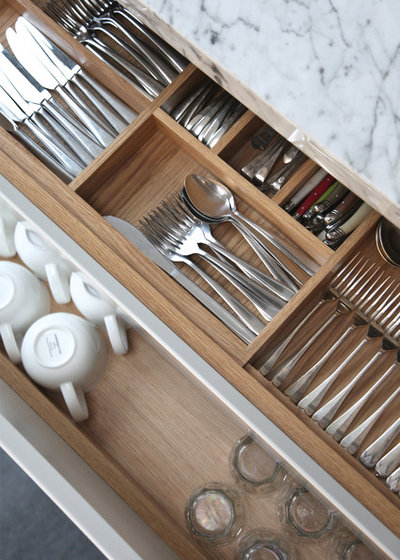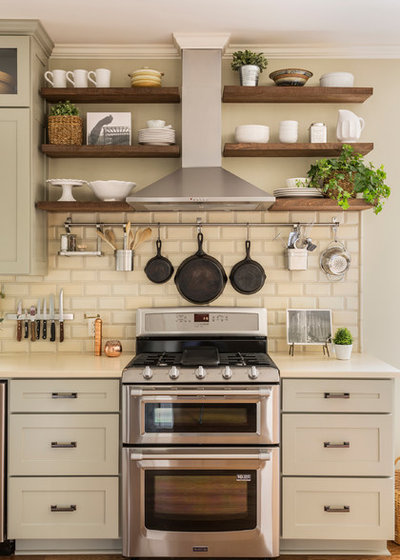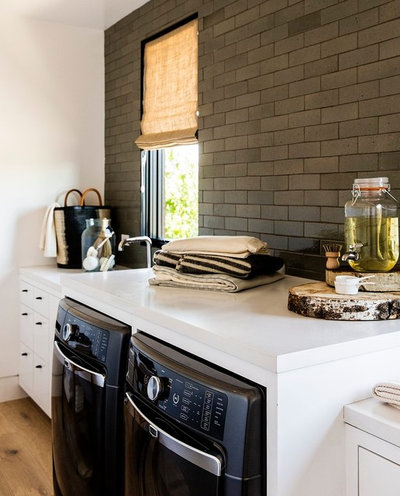Whether you are getting married, buying your first home or simply moving into your first real place of your own, you will likely find yourself with some shopping to do. A plan can help you stay focused and avoid unnecessary purchases, saving money and time (not to mention clutter) in the long run.
1. Bedroom
Niche Interiors
WHAT TO CHOOSE: Neutral sheets and bedding. Two sets of sheets made from pure, long-staple cotton in neutral hues can be mixed and matched with ease. Linen sheets are pricey, but can last forever and just get better with age. A soft white or cream-coloured throw made of wool or cashmere always looks luxurious at the foot of the bed, and can also be used in the living room.The Essentials for Kitting Out Your First Home
When it comes to bedding basics like pillows, a mattress and a mattress cover, you generally do get what you pay for (though it also pays to hunt for sales), so choose the best quality you can afford, and these items will repay you with many sound nights’ sleep.
WHAT TO AVOID: Loads of throw pillows. Those colourful pillows won’t seem so fun when you find yourself shovelling them on and off the bed each day. And trendy accent pillows tend to come and go, so what looks appealing to you today may lose its lustre over the next year. Better to put that money toward a nicer set of sheets.

Why you can’t go wrong with white bedlinen: Rethink Design Studio
2. Bathroom
WHAT TO CHOOSE: Two sets plus a spare. Having too many sets of towels just means extra laundry – two sets per person (bath towel, hand towel, washcloth), plus a spare set for guests, are all you really need.
WHAT TO AVOID: White towels. Sure, they look fresh, fluffy and inviting … when they’re new. But those same fluffy towels are (sadly) destined to become decidedly less so – the problem is, unless you bleach them, they will get dingy; but if you do bleach them, they’ll lose their fluff, fast. It’s probably better to start out with a set of towels in a more forgiving colour (grey is always chic).
Kathryn J. LeMaster Art & Design
3. Kitchen
WHAT TO CHOOSE: Hardworking multi-taskers. High-quality stainless steel saucepans and sautépans, cast iron skillets, a great set of knives, a wooden cutting board and a Dutch oven that can go from stovetop to oven – these are the workhorses of the kitchen and are worth the investment. When it comes to cooking utensils, you can accomplish most cooking tasks with a pair of tongs, a few wooden spoons, a spatula and a ladle.
Small appliances can be quite useful, but think honestly about which you will use frequently and which you could do without. For some, a food processor is essential, while for others it would just sit in the back of a cupboard gathering dust.
WHAT TO AVOID: Single-purpose tools and gadgets. Picking up specialty kitchen tools may seem harmless at first, but it’s a slippery slope. Before you know it you’ll have accumulated a drawer overstuffed with strange one-job wonders you hardly ever use. If a tool you already own can get the job done, consider sticking with it rather than buying the ‘special’ tool.

Where to put pots and pans: Finch London
4. Dining
WHAT TO CHOOSE: Beautiful basics. You really can’t go wrong with classic stainless steel cutlery, white dishes and clear glassware – it’s worth shopping around to find sets you really love, because you will likely keep them for a long time. A good set of white dishes and clear glassware can be dressed up or down, and can elevate the everyday. A set of cloth napkins (cotton or linen) can be used every day or for dinner parties, and a tablecloth in a natural colour can dress things up further.
WHAT TO AVOID: China so fancy you’re afraid to use it. Beautiful china can be a lovely way to make a special occasion even more elegant – but be honest with yourself about how often you are likely to actually pull it out. Would you use it for a casual gathering with friends, for instance? Or would you save it for a once-a-year major holiday … if you host it, which you might not?
Spending more on a really gorgeous set of everyday dishes is probably a better investment – and if you really want to add something extra special to your dinner table, consider a set of fancy dessert plates or a beautiful vase.
BY ON
5. Entertaining
WHAT TO CHOOSE: Versatile serving pieces. Chunky wooden serving boards can be used for bread, cheese or rustic desserts. Simple white serving platters and bowls are endlessly versatile, and a big handcrafted wood salad bowl will last a lifetime when properly cared for. Wire baskets are also quite handy, as these can be used for storage in the pantry or as bread baskets when lined with a linen tea towel, and you can never go wrong with classic candlesticks and unscented candles.
WHAT TO AVOID: Holiday-specific items. Serving pieces and dinnerware that feature a holiday-specific motif (for example, plum puddings and holly for Christmas) are so rarely used, they are likely to become more of a space-sucking burden than a true joy. Why not think of other, smaller ways of giving each holiday table its own personality? Much can be done with creative flowers, seasonal items from nature and candlelight.
Disc interiors
6. Housekeeping
WHAT TO CHOOSE: Good-looking, hardworking tools. It may sound silly, but why not take the time to track down a broom and dustpan you like the looks of? Then, when you forget to put them away when company drops by, they won’t be such an eyesore – plus, they will make cleaning a bit more pleasurable, and that’s never a bad thing. If you like to use a brush to scrub your dishes, look for a pretty one with a wooden handle and natural-fibre bristles, and it will enhance rather than detract from your kitchen.
When it comes to big cleaning tools like the vacuum cleaner, get the best you can afford – a great vacuum should clean efficiently, sound relatively quiet and last (without problems) for many years. It’s worth spending a little more to get this choice right the first time.
WHAT TO AVOID: Gimmicky cleaning tools and products. You really don’t need much in terms of tools and products to keep your home clean: a few scrub brushes, a stack of microfibre cloths, an all-purpose cleaner, a window cleaner and bathroom disinfectant should just about cover it. Filling your cabinet with specialised cleaning products and tools will just make the task more complicated than it needs to be.

The procrastinator’s ultimate cleaning rundown: Sims Hilditch
7. Organising
WHAT TO CHOOSE: Hooks, baskets and matching sets. Good, sturdy hooks and woven baskets can tackle all sorts of items, from coats in the entryway to aprons and cleaning tools in the kitchen. If you do find you need other organising containers, like jars for pantry items or photo boxes, invest in a matching set rather than picking up a piece here and there at random. They will look better on your shelves, and when it comes to boxes, they will stack more easily as well.
WHAT TO AVOID: Loading up on organisers before clearing clutter. If you’re facing a messy area, try clearing out the clutter before purchasing any new containers to sort it – once you’ve pared back, you may find you don’t need the extra containers after all.
Amber Interiors
8. Decor
WHAT TO CHOOSE: Plants, mirrors and art. When you are first starting out, you may need to make do with some hand-me-down or budget furniture pieces, but everything will look better when surrounded by lush green foliage, colourful artwork and bright, light-enhancing mirrors. Healthy houseplants make any room feel fresher and more inviting, and they clean the air to boot. If you are worried about keeping houseplants alive, get some plant recommendations and care advice from a local nursery, and use a phone reminder to alert you when it’s time to water them.
You can find beautiful, affordable artwork (both framed prints and originals) from local galleries that feature up-and-coming artists, at student art shows and online.
WHAT TO AVOID: Too many purely decorative items. Focus on getting the basics in place (like a great sofa and proper lighting) before spending on accessories. Even then, consider accessories with a purpose – like a big art book or scented candle – before picking up that sculptural objet.
Guest contributor: Laura Gaskill; this story first appeared on houzz.com.au 

Houzz Australia Contributor. See more: www.lauragaskill.com







